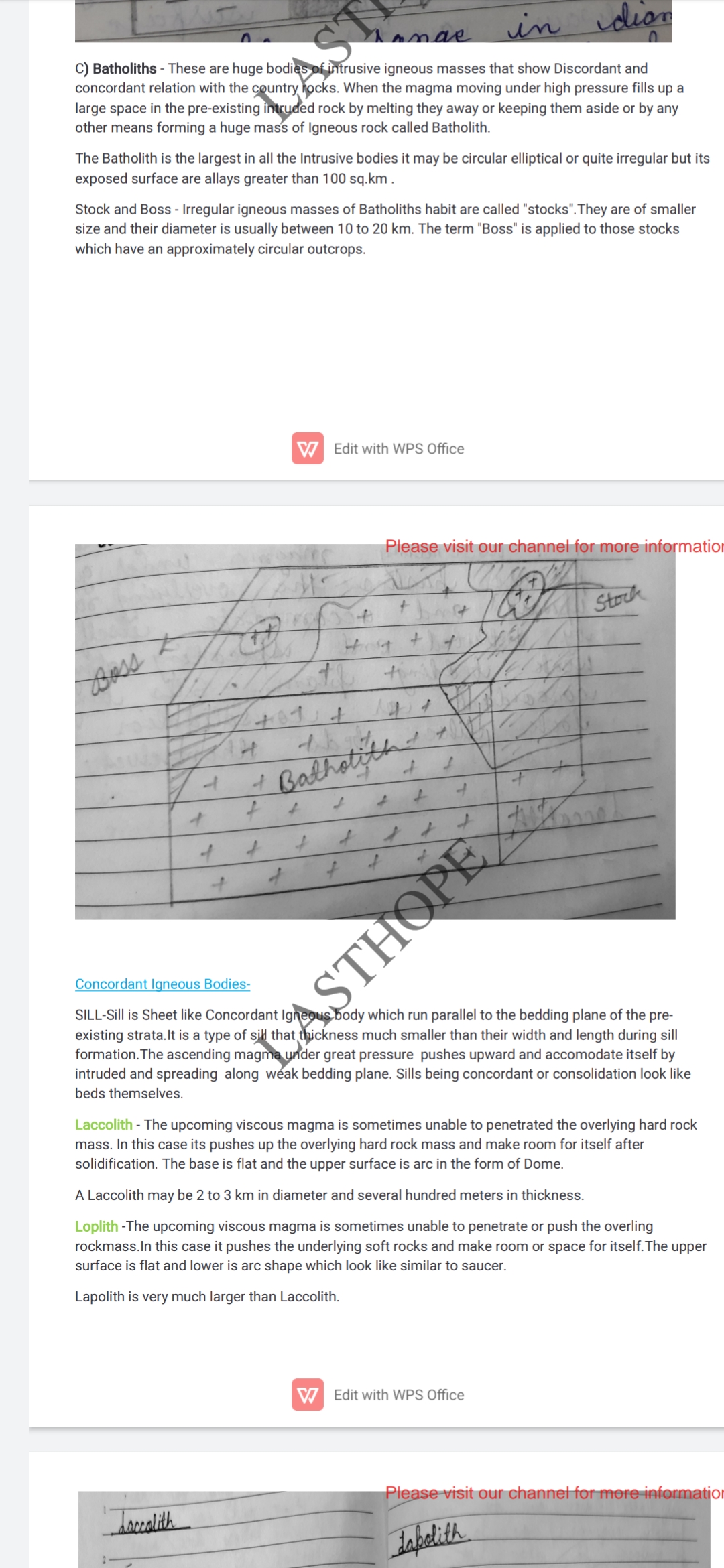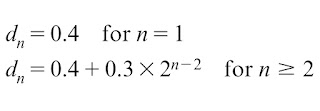Last hope Geology
Ammonoidea , its morphology, evolutionary trend and Geological history.
Saturday, April 17, 2021
Thursday, March 26, 2020
Kepler's Law of planetary motion
Kepler's Law of planetary motion
There are three Kepler's Law:-
Kepler's 1st law
The orbit of each planet is ellipse with the sun at one focus.
It is based on law of conservation of energy.
Kepler's 2nd law
The orbital radius of a planet sweeps out equal area in equal time interval.
This law is based on law of conservation of angular momentum.
Kepler's 3rd law
Also known as law of periods
The ratio of the square of planet period (T^2) to the cube of semi major axis of it's orbit (a^3) is constant.
[{(T^2)/(a^3)}=Constant]
We can better understand Kepler's Law through this video.
https://youtu.be/mDHPziSaNlU
Wednesday, March 25, 2020
Bode's law
Bode's law
Bode's law states that the distance between second planet to the sun is approximately double then the distance between first planet from the sun.
In other words we can say that Bode's law is nothing but just an expression to calculate the distance between planet and the sun in Astronomical unit.
Formula:-
Here dn is the distance in astronomical unit
n =1 for mercury
n=2 for Venus
n=3 for Earth
n=4 for Mars
n=5 for astroid belt
n=6 for Jupiter
.........
n=9 for Neptune
Thursday, December 26, 2019
Ammonoidea, morphology evolutionary trends and geological history
Ammonoidea
Systematic classification:-
Kingdom : Animalia
Phylum: Mollusca
Class: Cephalopods
Sub Class: Ammonoidea
Introduction:-
The class Cephalopods is made up of two Greek word Cephalon and poda which means head and foot therefore we can say that animals whose head act as foot of the animal than those animals are known as Cephalopods.
These are exclusively marine animals . They started their life in Cambrian period. Some extinct type of Cephalopods are Belemnites, Ammonites and Goniatite.
Morphology
 |
| Ammonoid's Aperture |
the shell is a conical tube like structure and its opening end is the anterior end.
And the closing end is the posterior one.
Gap between two whorl is the chamber.
Siphucle is a hollow tube like structures which passes through the margin of septa.
The interior of the shell is divided into a number of Chamber by the means of a thin transverse partitions turn as septa.
Many ammonoids fossils show holes in their septa known as septal neck.
In most form coiling is in horizontal plane which is called discoidal.
But sometimes the coiling is in vertical plane known as helicoidal.
https://youtu.be/GgFQEQTUI-E
Evolutionary trends:
Evolutionary trend in suture line
From devonian to carboniferous the suture was straight or slightly undulating.From carboniferous to Triassic the suture was goniatite type with rounded sandals and angular lobes.
From Triassic to Jurassic the suture was Ceratite type with smooth rounded saddle and finally divided lobes.
From Jurassic to upper cretaceous the suture was ammonoid type with highly divided saddle and lobes giving flower like appearance.
Evolution in Siphuncle.
In beginning from devonian to carboniferous the Siphuncle was toward the dorsal side and are called Intrasiphuncle.
From carboniferous to Jurassic this Siphuncle passes through the middle of the body of Ammonoids.
And finally from Jurassic to upper cretaceous this if uncle passes through all the ventral sides of the animals body.
Evolution in the septal neck
In beginning the Septal neck was toword the protoconch and are called retrosiphonate septal neck.
And with time septal neck became straight.
And finally the septal net turned toward the aperture which is called prosiphonate Septal neck.
Evolution in aperture
In beginning aperture was rounded
After Jurassic aperture change to lappate form
In beginning aperture was rounded
After Jurassic aperture change to lappate form
In end time the aperture was keel type.
Evolution in ornamentation
In beginning the shell was smooth and characterised with numbers of lines.but ribs on shell maybe bifurcating, trifurcating, multifurcating and number of types .
Geological history:
Ammonoidea is the largest subclass which has wide geographical distribution and very short geological range from lower devonian to upper cretaceous . The devonian Ammonites were similar to silurian nautiloids with simple Goniatite suture line.
After palaeozoic only phylloceras continued to mesozoic era.
During mesozoic the suture line become more and more complex. ex:- ammonoid type
Triassic and Jurassic period were marked by progressive changes while cretaceous period was marked by retrogressive changes which lead to the extinction of Ammonoids.
Subscribe to:
Comments (Atom)











































